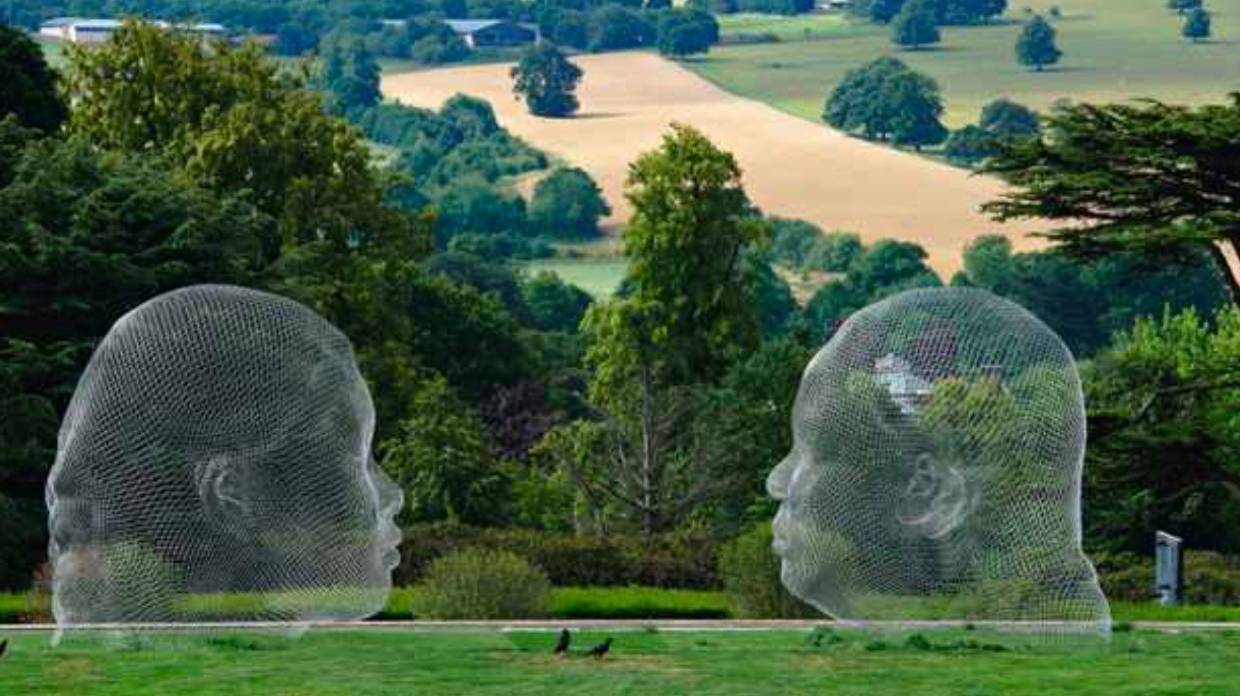YAWNING GAPS IN WELLINGTON’S ART LANDSCAPE
Published in Stuff, 20 August 2020
Works by Jaume Plensa in the Yorkshire Sculpture Park in Wakefield, England. Wellington has neither land art nor a sculpture park, yet likes to consider itself the cultural capital, says Neil Plimmer.
OPINION: Around the world cities are giving to artists bulldozers and the like, and a site, perhaps a used quarry, and asking them to make land art. Hillsides are terraced, small valleys filled with water to make lakes, paths and walkways constructed. You can view the art piece from afar or above or walk all over it.
It is a public art trend of the last decade or two. Many of the resulting art forms are quite stunning, some formal while others remain more rugged but still visibly a work of art. They all show strong popularity as visitor attractions.
Wellington’s claim to be New Zealand’s cultural capital has yawning gaps in its art array, with no land art nor a sculpture park. The latter is another well-established feature of cities seeking to project themselves as creative centres offering engaging lifestyles.

Virginia King’s Koru (2001) at Brick Bay Sculpture Park in Auckland.
Auckland has stolen a march in both these features. It has two world class works of land art, the famous Maya Lin’s A Fold in the Field at Gibbs Farm (she is the designer of the Vietnam War memorial on The Mall in Washington DC) and Virginia King’s Koru at Brick Bay Sculpture Park (she is the artist for Wellington’s Katherine Mansfield sculpture at Midland Park).
And Auckland has at least four prominent sculpture parks, so good that every time a Wellington group organises a tour to Auckland to visit them it is sold out, even if it is highly priced to be a fundraiser for the organising group.
Is Wellington bereft of space and resources to meet this challenge? The spaces are sitting there waiting, ideal for these roles and not far from the CBD, and the initial financial resource is on offer.

Watts Peninsula is an ideal site for a Wellington sculpture park, says Neil Plimmer.
The sites are on Watts Peninsula, the long green promontory of land on the eastern side of Evans Bay, above Shelly Bay, running from the housing area and the old Mt Crawford prison in the south to the Massey Memorial and Point Haswell in the north.
It is surplus central government land of 68 hectares, waiting for some imaginative use.
In the 2019 Budget the minister of finance announced that the land would be kept in government ownership and transferred to the Department of Conservation to be a reserve. The roles of preparing a development plan and the future management of the land was assigned to Wellington City Council, with $4 million of taxpayer funds to help get this under way.

The potential for land art like The Garden of Cosmic Speculation, at Dumfries in Scotland, is going begging in Wellington.
The potential for land art like The Garden of Cosmic Speculation, at Dumfries in Scotland, is going begging in Wellington.
Fifteen months later and there is no evidence that anything has happened. Does Wellington care if this vast area remains in scrub, its potential for the city ignored?
If the bulldozers and front-end loaders could move in, the Miramar side of Wellington would benefit from an inspiring new attraction, and Wellington would reinforce its cultural capital aspirations by art features that are particularly well placed because of their general accessibility and their visibility from aircraft arriving at and departing from the airport.
Neil Plimmer is a trustee and former chair of the Wellington Sculpture Trust.